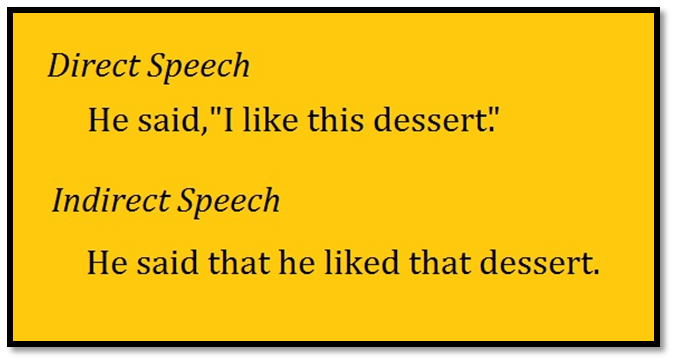Direct speech is a report of the exact words used by a speaker or writer. Contrast with indirect speech. Also called direct discourse.
Direct speech is usually placed inside quotation marks and accompanied by a reporting verb, signal phrase, or quotative frame.
Examples and Observations
— A South Carolina parrot was the sole witness to the death by neglect of a 98-year-old woman. “Help me, Help me,” said the parrot. “Ha ha ha!”
(reported in Harper’s Magazine, February 2011)
— I went in search of the good beer. Along the way, I caught an intriguing snippet of conversation in the sunroom:
“So if I win at that table, I’ll go on to the World Series,” said the mom I know as some kind of government contractor.
“World Series?” you ask.
“Of Poker,” she replied. “I went to last year.”
Whoa.
(Petula Dvorak, “White House Correspondents’ Association Dinner Has Nothing on Suburban Fete.” The Washington Post, May 3, 2012)
— “How old are you?” the man asked.
“The little boy, at the eternal question, looked at the man suspiciously for a minute and then said, “Twenty-six. Eight hundred and forty eighty.”
His mother lifted her head from the book. “Four,” she said, smiling fondly at the little boy.
“Is that so?” the man said politely to the little boy. “Twenty-six.” He nodded his head at the mother across the aisle. “Is that your mother?”
The little boy leaned forward to look and then said, “Yes, that’s her.”
“What’s your name?” the man asked.
The little boy looked suspicious again. “Mr. Jesus,” he said.
(Shirley Jackson, “The Witch.” The Lottery and Other Stories. Farrar, Straus and Giroux, 1949)
What is direct speech?
Direct speech is writing down or reporting the actual words that were said by a speaker;
“I’m looking forward to playing football on Saturday,” Max said.
What is indirect speech?
Indirect speech, sometimes known as reported speech, is when something that has been said is reported.
Max said he was looking forward to playing in the match on Saturday.
All you needed? Let’s practice!

— Direct and indirect speech explained
Children often get confused between direct and indirect speech. When we are writing, we need a way to differentiate between what someone is being reported to have said and what they actually said. If you were asked; what did she say? You could answer it in one of two ways;
“I don’t like strawberry ice-cream,” Evie said. (Direct speech)
Evie says she doesn’t like strawberry ice-cream. (Reported speech)
Notice that the direct speech uses speech marks (“…”) to show exactly what was said. Speech marks are positioned at the start and end of the actual words that were said. The part where it reads ‘Evie said’ are not in speech marks because this part was not said out loud, this is just a way of the writer communicating who was speaking to the reader.
Reported speech is always written in the past tense. This is because the words have already been spoken and the reporter is simply reporting what has already been said. It is important to consider what was said and convert it to past tense.
Speech marks
Children (and adults) often get confused about where to put speech marks with direct speech. Here is a quick summary of the rules;
- Put speech marks around the actual words that are being said.
- Start each new piece of speech with a capital letter.
- Punctuate the speech before closing it.
- The new speaker, new line.

